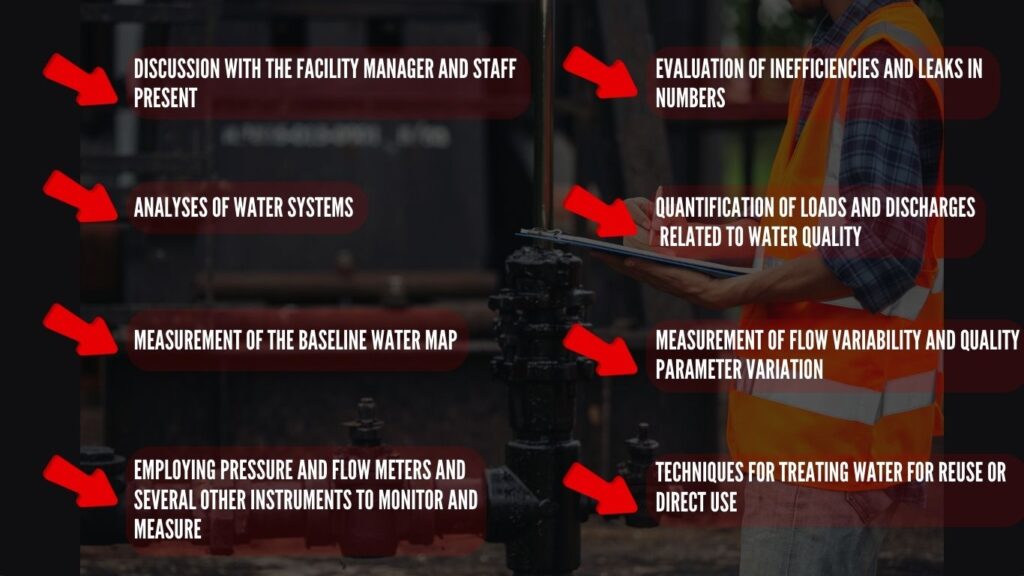
A comprehensive assessment of a company’s water usage is called a water audit. It objectively evaluates every use-related factor, starting at the point when water enters the building and moving up to the point where wastewater is released. The audit determines the amount/volume of water being used, any wastage, leaks that are present, excess use, etc., and pinpoints locations where consumption can be decreased. In order to increase effectiveness and decrease utilization, it offers recommendations for improvements to current treatment practices and procedures. An audit offers suggestions on how to decrease water use and waste based on this thorough investigation and observations. It also offers cost benefit evaluations for suggested improvements to treatment practices. Additionally, it suggests setting up a mechanism to keep tabs on how much water is introduced into a system, how much is distributed, and how much is used.
A water audit is a methodical procedure that objectively determines a water balance by measuring the flow of water from the location of water withdrawal or treatment, via the distribution system, into areas where it is consumed, and finally into discharge points. Calculating the water balance, assessing water use, and identifying water-saving strategies are all part of conducting a water audit.
Water audit includes a thorough examination as well as an initial water survey. To gather background data on plant operations, water consumption and discharge patterns, as well as water billing, rates, and water cress, a preliminary water survey is done.
Following the study of the secondary data gathered from the sector, a thorough water audit is carried out, encompassing the following steps:

